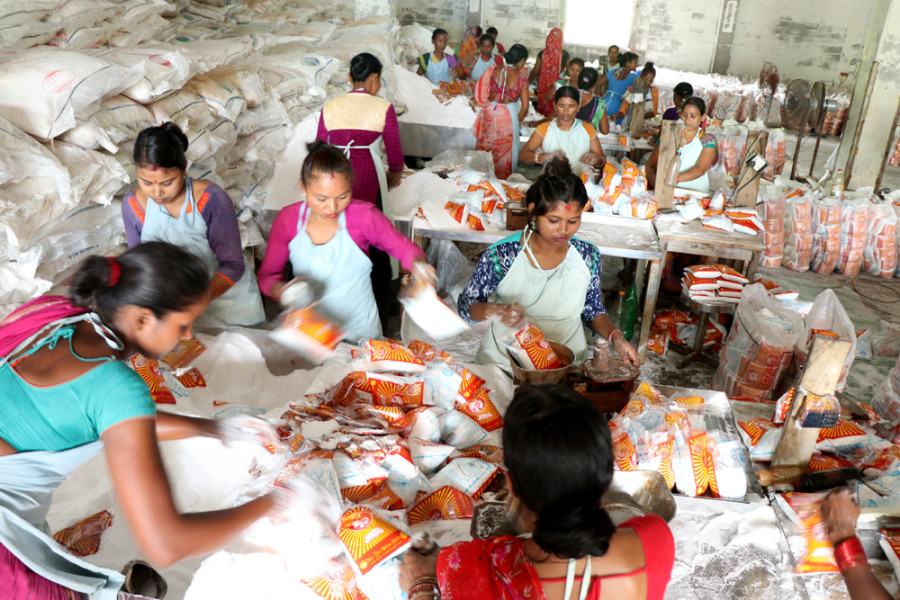Health
Iodised salt once prevented goitres but it is now leading to hyperthyroidism
More than 60 percent of the population consumed excessive levels of iodine through iodised salt, a survey shows.
Arjun Poudel
Seventeen-year-old Sabina Tamang of Sano Thimi in Bhaktapur has had irregular menstrual cycles ever since she was 14 years old. Sometimes, she doesn’t get her period for months and when she does, there is often heavy bleeding, leading to weakness, headaches and blurry vision.
Tamang's concerned mother recently took her to a gynaecologist, who in turn asked her to consult with an endocrinologist. Tamang was found to be suffering from hyperthyroidism, a condition where the thyroid gland produces too much of the hormone thyroxine. In women, this can lead to irregular menstruation and heavy blood flow.
“When my parents asked me about the changes in my behaviour, I felt irritation. They were also afraid that I was depressed,” said Tamang. “But since I started taking thyroid medicine, my health has improved.”
Like Tamang, the number of people suffering from thyroid-related problems has risen in the past few years and doctors blame the iodised salt that is widely consumed throughout the country.
In 1993, the government mandated that salt be fortified with iodine to prevent health problems caused by an iodine deficiency, as salt is used regularly throughout the year and is available at low cost. A lack of iodine in the diet can lead to hypothyroidism, where the thyroid glands produce too little thyroxine, leading to the development of goitres, among other symptoms. But 26 years since this fortification began, adverse effects are now being seen.
Several studies—including the 2016 Nepal National Micronutrient Status Survey jointly carried out by the World Health Organization, UNICEF, and the US-based Centres for Disease Control and Prevention and the Ministry of Health and Population—have found that Nepalis are consuming an excessive amount of iodine.
According to the survey, over two thirds—68 percent—of the population across the country is consuming iodine over the World Health Organization recommended dosage of 15 to 40 parts per million (ppm).
Several endocrinologists that the Post spoke with said that along with middle-aged women, the number of children and men suffering from thyroid-related diseases had risen significantly in the past decade.
“Of the total thyroid patients who visit my clinic, 30 to 40 percent are men,” Dr Ansu Mali Joshi, an endocrinologist at Alka Hospital, told the Post. “More children and young people are also coming for treatment.”
According to Dr Sandesh Panthi, an endocrinologist at Grande International Hospital, goitres in women have almost been eradicated by the use of iodised salt but after 26 years, the excessive iodine in salt has started to show adverse effects.
“Excessive iodine produces antibodies that affect the body’s immune system,” said Panthi.
Iodine is a mineral found naturally in seafood and plants that grow in areas with seas. In places where iodine is naturally rare, it needs to be artificially introduced into the diet via fortified food products. But consuming too much iodine can lead to hyperthyroidism where patients suffer from thyroid gland inflammation; burning of the mouth, throat, and stomach; fever; stomach pain; nausea; vomiting; diarrhoea; and a weak pulse.
According to Panthi, even newborn babies are found to be suffering from thyroid-related diseases. Pregnant mothers suffering from thyroids can give birth to babies with similar problems, and there could also be several complications during pregnancy and childbirth.
As endocrinologists link the rising cases of hyperthyroidism with the iodine-content in salt, the government is currently mulling over reducing the level of iodine in the salt that is currently being sold in markets, according to Kedar Parajuli, chief of the nutrition section at the Family Welfare Division under the Department of Health Services.
“We have written a formal letter to the World Health Organization, asking its views to reduce the level of iodine in salt,” Parajuli told the Post. “We will then write to the Salt Trading Corporation, the agency that fortifies and supplies salt to reduce the iodine level.”
The corporation fortifies iodine at 50 ppm per kilo of salt, which is higher than the recommended dosage. This higher level was mandated under the assumption that as transportation and storage times were longer in the 90s, some amount of iodine would dissipate by the time the salt reached markets. However, roads have now reached all corners of the country and transportation times have considerably lessened. Hence, there is no need for such a high level of iodine in the salt, according to doctors.




 14.12°C Kathmandu
14.12°C Kathmandu














